Anyone who tells you that AIDS activism was only a bunch of white gay men who got mad because suddenly their community experienced oppression isn’t telling the whole story. It’s understandable that people get history wrong when, as Suraj Madoori recently wrote: “Even after 35 years of HIV/AIDS, the stories of critical Black activism are notably absent in the dominant media and movement narratives.” Consider for example the narrative of the film How to Survive a Plague, which presents the history of AIDS activism in the US as mainly about the interventions made by white gay men involved in treatment activism. There are so many stories that haven’t been told, have been forgotten, or that have been only partially captured. Anti-Back racism impacts on the dominant AIDS narrative, whether it be the racist construction of “African AIDS” or the systematic forgetting and eclipsing of Black AIDS activism and organizing.
While the AIDS crisis is a condensation of many social relations including sexuality, gender, race, class and much more, often when only the ‘sexuality’ part is focused on and separated from the web of relations it is part of a white gay men’s narrative emerges. While in no way denying the devastation that the AIDS crisis inflicted on white gay men and the importance of their activism, this is only a part of the story.
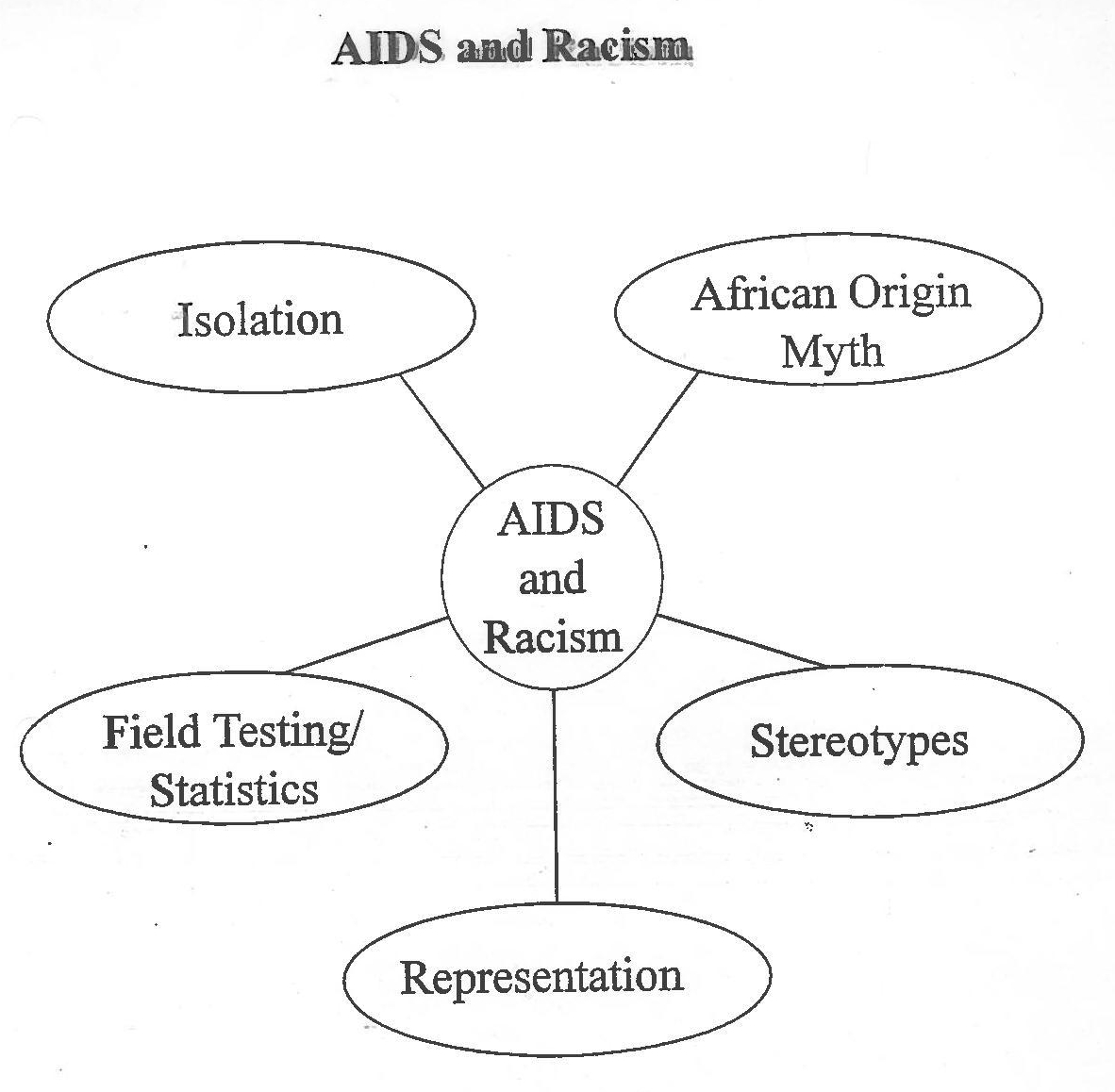
Early on, societal responses to AIDS often cited the so-called “4-H” conception of who was affected (Haitians, homosexuals, hemophiliacs, and heroin users). From the beginning in Haitian communities, especially in Canadian cities like Montreal and Toronto, activists had to fight against anti-Black racism not only from the Red Cross, the government, and the medical profession, but also from many of the AIDS Service organizations. Since the emergence of the pandemic, many responses from governments on down to the individual level were racist, ableist, anti-drug-user, as well as being gay-hating. Talking with AIDS activists about the history of their work reminds us over and over again about the ways history—and how we tell it—matters. For World AIDS Day 2017, we’re taking a cue from the New York City-based organization Visual AIDS to reflect on the place of Black activists and cultural workers in the histories of AIDS activism in the Canadian context. This year’s Day With(out) Art commissioned video programming centres Black narratives within the ongoing AIDS epidemic; there are vital threads of connection between this contemporary work and the histories we are documenting in the AIDS Activist History Project.
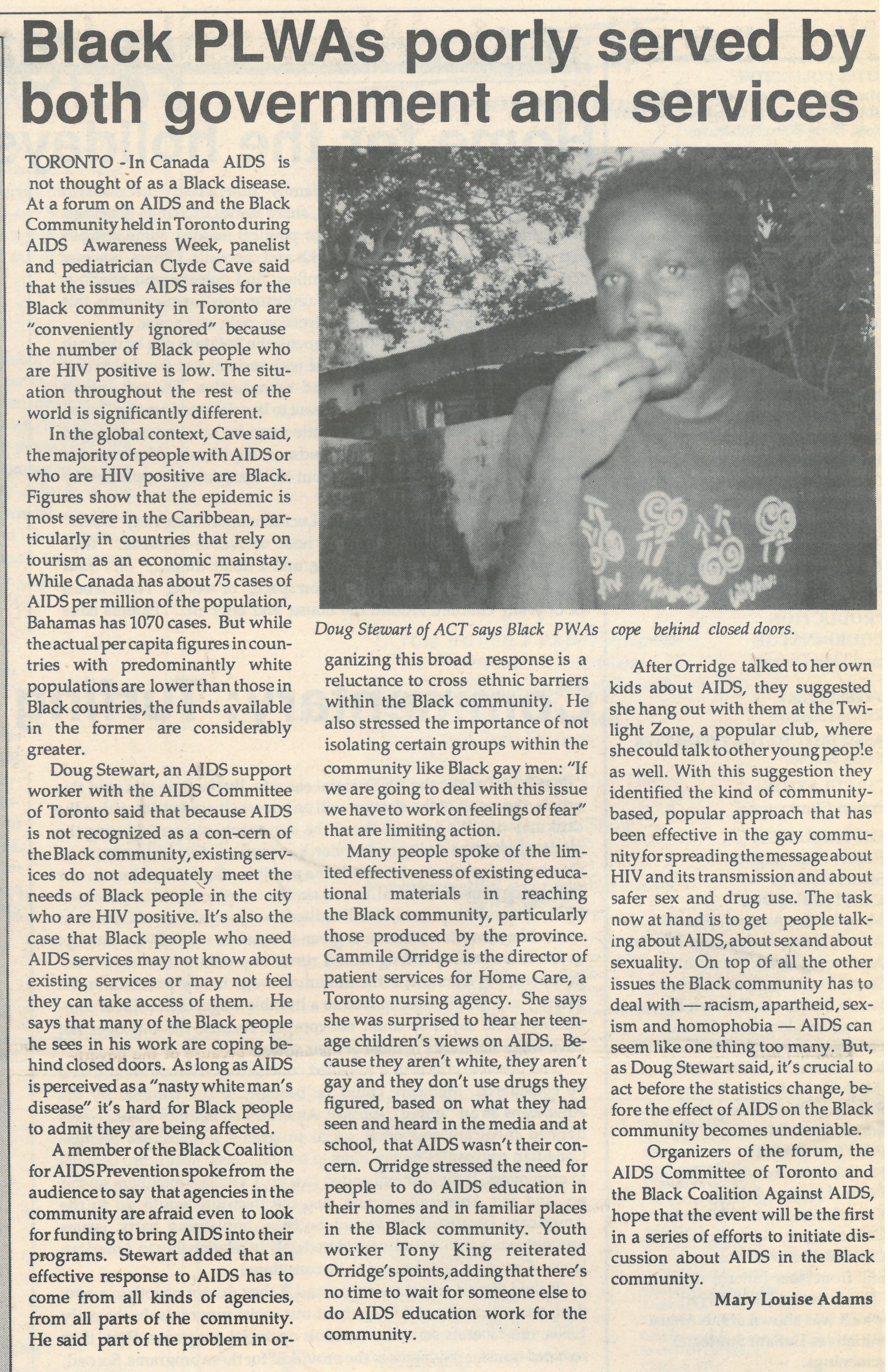
Many of our interviewees reflected on the role race and racism played in the Canadian government’s responses to AIDS, and on the important activist work of antiracism and community organizing within racialized communities. In this short post we want to highlight just a few of the key interviews we’ve conducted thus far that speak to the vibrant work people did. This isn’t a comprehensive narrative of this critical, often ignored work, but a snapshot direct from activists who were there. So continue on for a hint of the amazing work they did organizing with the Black Outreach Project, Black Coalition for AIDS Prevention (Black CAP), and Community Organizations Mutually Battling AIDS Together (COMBAT). It is also important to note that this work organizing in Black community spaces was often in direct solidarity with other groups organized around racialized subjectivities, including Zami, Khush, Alliance of South Asian AIDS Prevention [ASAAP], Gay Asians Toronto [GAT] (later Asian Community AIDS Services), the AIDS Cultural Network. As Anthony Mohamed told us, many of these groups “are still alive today and still doing wonderful work within the various communities that they’re a part of.”
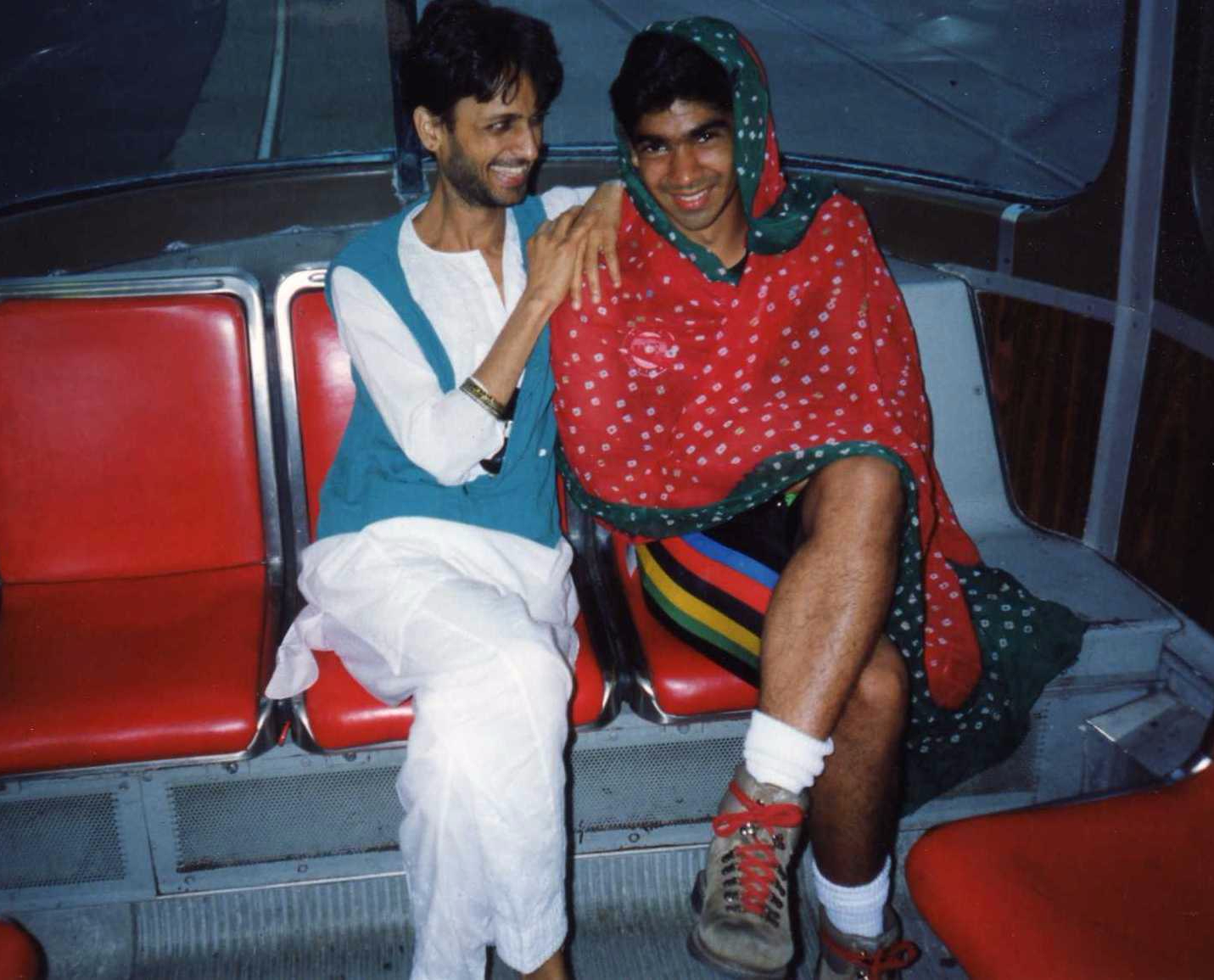
On the East Coast in Halifax, Kim Bernard was the founding organizer for the Black Outreach Project, which originated from the Halifax-based PWA Coalition. Kim told us “I believe that the Coalition saw that there was nothing being done in the Black community around HIV and AIDS education, awareness, information and that there was no support for people that have identified as being HIV-positive. I do commend them for recognizing that as a problem in our community and a gap.” Kim’s work was funded by a grant, and at the start she was the only person working on the project. She remarked, “Then they got a grant to hire somebody. It’s a typical thing, you only have one person, so when you only have one person trying to cover all of the Atlantic provinces… That can be challenging.” She went on to set up a vibrant board to support the project, to hire students to work with her (one of whom took over the project when Kim moved on), and to make meaningful connections in Black communities across the east coast. Part of that work was a multi-level “needs assessment” to figure out what the situation actually was for Black people in the Atlantic provinces in terms of HIV and AIDS; Kim and her team wrote up a comprehensive report about their findings from that work. In our discussions with her, Kim also highlighted the ways that, although the PWA Coalition recognized the need to do work in Black communities, they didn’t confront the systemic racism that structured all of the responses to HIV and AIDS. As she said, “There are probably individuals in the system that get the point but when the whole system is racist, it becomes an institutional/systemic issue. It is difficult to see change.” Kim had brought some of the material from the Black Outreach Project to our interview with her, which we were able to scan and include in the archival materials files; there is a wealth of amazing material there.
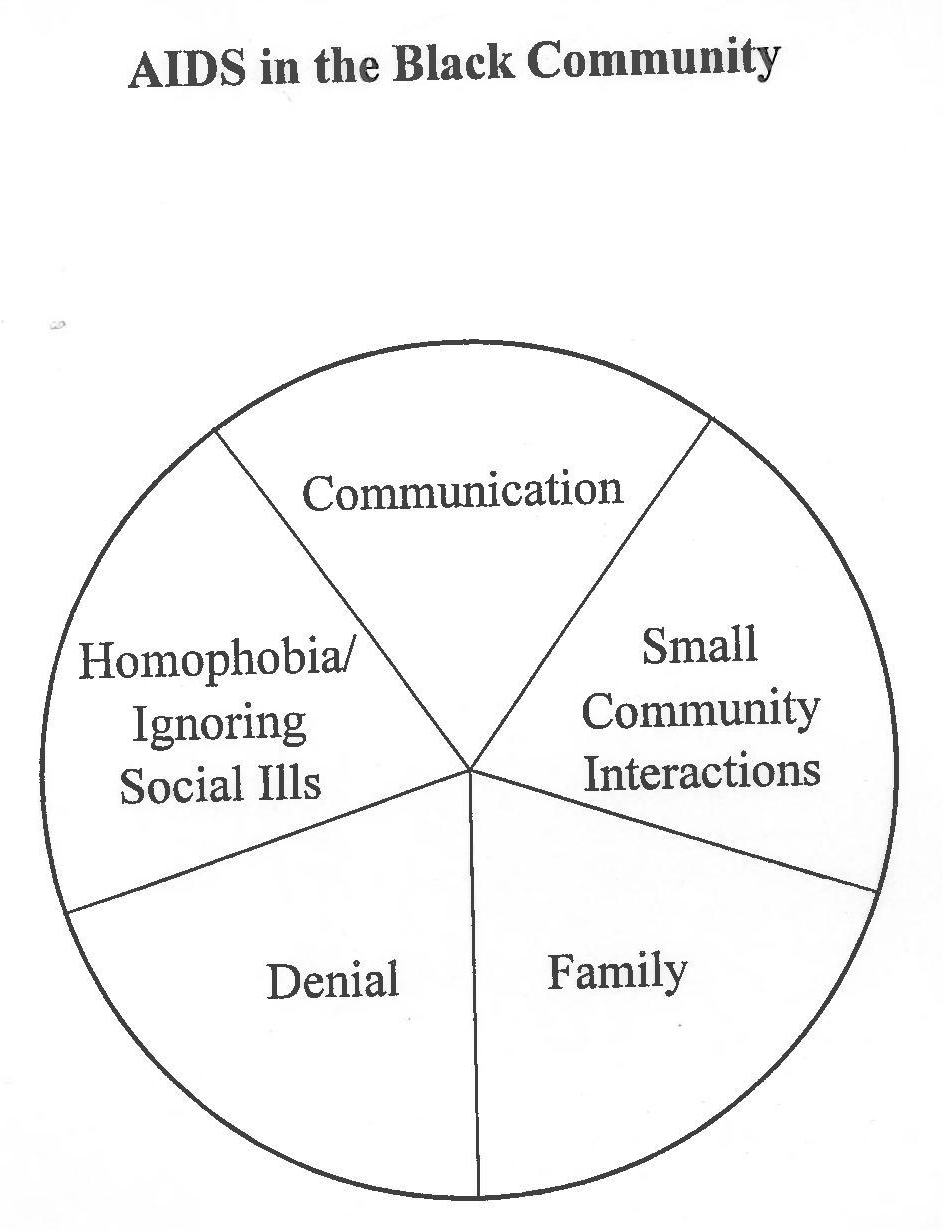
In Toronto, Douglas Stewart told us about the rich web of organizations and community formations through which his and other people’s political work around HIV and AIDS arose. He said, “part of the larger context here is trying to identify a space for Black queer people to be able to name and identify our own experience, and to figure out what life can look like beyond that. Let me just say, personally, that’s why I got involved. And then other people came with some of that, but other interests as well in terms of being in those spaces for those conversations. And so I think that part of that was also really figuring out where and when and what that looks like in relation to different kinds of movements that are part of my identities, so being queer, being Black.” Doug was centrally involved with the formation of Black CAP (Black Coalition for AIDS Prevention), a community organization that was celebrating its 25th anniversary the summer we did this interview with Doug. He narrated their beginning, saying, “it was important for, again, some of the reasons I just talked about in terms of the barriers to people even being engaged in HIV and AIDS, where the conversation was situated, where it was seen as coming from, and who was part of that conversation? So, part of it was to partner with a respected Black community organization. At that time it was Hara
mbee, and it was a social service community organization. And so we were based in their offices… So, it’s now a Black community conversation.” Doug also importantly drew lines of connection between early work in these historical contexts and contemporary struggles that groups like Black Lives Matter continue to wage. He reflected on how oppression shapes the conditions of our work, saying, “part of it’s about how we have to always own and acknowledge how white supremacy and racism and heterosexism is still integral in how these systems are set up… And so even when we have these initiatives that are somehow supposed to be pushing against that, we’re always negotiating and making deals with all of that, at all kinds of levels. And so it just feels like we’re in this messy game continually.”
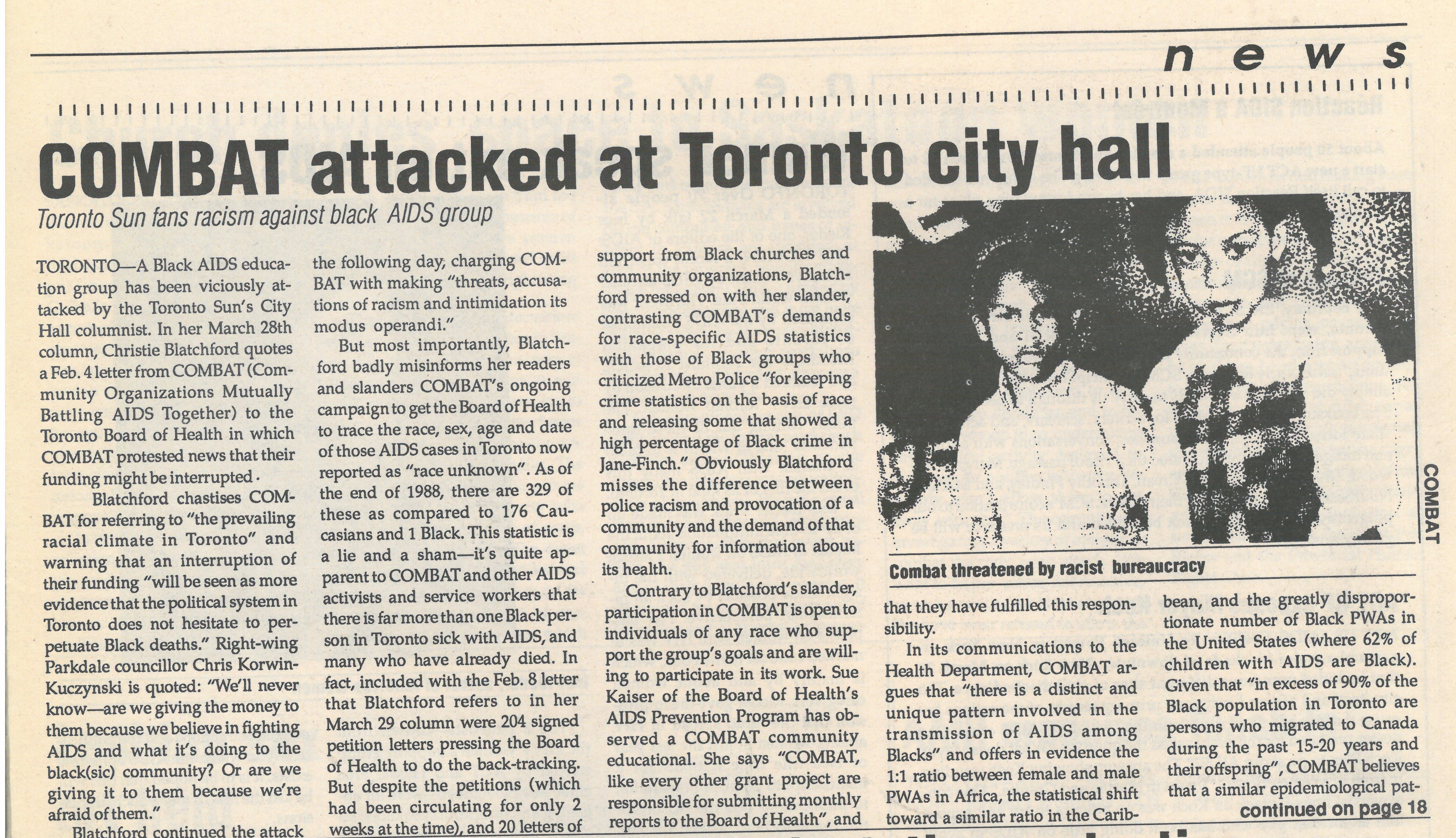
Dionne Falconer was involved with Black CAP in those early years. She had been part of the Toronto-based Black Women’s Collective (BWC), which did vital political work including challenging white hegemony in the BWC feminist movement and published their own newspaper. Through her involvement with BWC, Dionne joined the work that Black CAP was doing. She reflected on her experience as a young organizer doing outreach work, saying: “So, you have all of the issues interspersed, intermingled and addressing them, because that’s one of the things that HIV does is that it does bring all the issues together and you can’t always tease them out or pull them apart. You’ve got to address them all at once.” And as Dionne articulated, it was vital to have groups like Black CAP because, as she told us, “I mean there was AIDSphobia and the stigma around living with HIV, but also people didn’t want to go in a place where they didn’t see themselves reflected. And that’s also the reason for a place like Black CAP. Just like the reason for why ASAAP started—or any of the other groups was that, again, people want to see themselves reflected and feel like, ‘Oh, this is a much more welcoming environment.’ … Or, the way that they were treated when they went in, like, i.e. you’re coming in for services and no one’s paying attention to you. It’s like you’re invisible. And so, I think that those kinds of situations happened for people and thus also meant that, ‘You know what? I don’t want to go back.’ Suddenly, you’re also trying to deal with HIV, you’re hearing a lot of things … Because, remember, these are early days, so treatment is not what we see today. People are dealing with all kinds of illnesses and sometimes not fully understanding what exactly is going on in their bodies, struggling with it, not wanting to go to the doctor’s, not connected to an HIV doctor, so for all of those kinds of reasons.”
Although we haven’t talked with her directly yet (if anyone knows where she is, contact us!) Jackie Wilson was another vital force in early AIDS activism in Toronto’s Black community. She organized a group called COMBAT (Community Organizations Mutually Battling AIDS Together). Sri, a white activist who supported Jackie’s work, told us, “COMBAT was mainly focused on women and thereby had to focus on straight families. Jackie said, ‘The best access to straight families in the Caribbean communities in Toronto was through the storefront churches, so that’s where we are going to go. Every week, we are going to talk at the storefront churches. You are going to make sure the PA is working for me. You are going to make sure all the logistics are happening. You are going to hand out flyers and things.’ He continued, ‘And basically, she said if you come in, if you approach a Jamaican church as a queer organization, they’re just not going to let you though the door. The message is just never going to reach its target. And that was her position, so she said, ‘I’m going to be the straight lady working with straight people about how they get AIDS and how they are at very, very high risk, and any denialism is going to stand as a barrier to that.’ And she basically said, ‘Look. I can go places Black CAP will never get into.’”
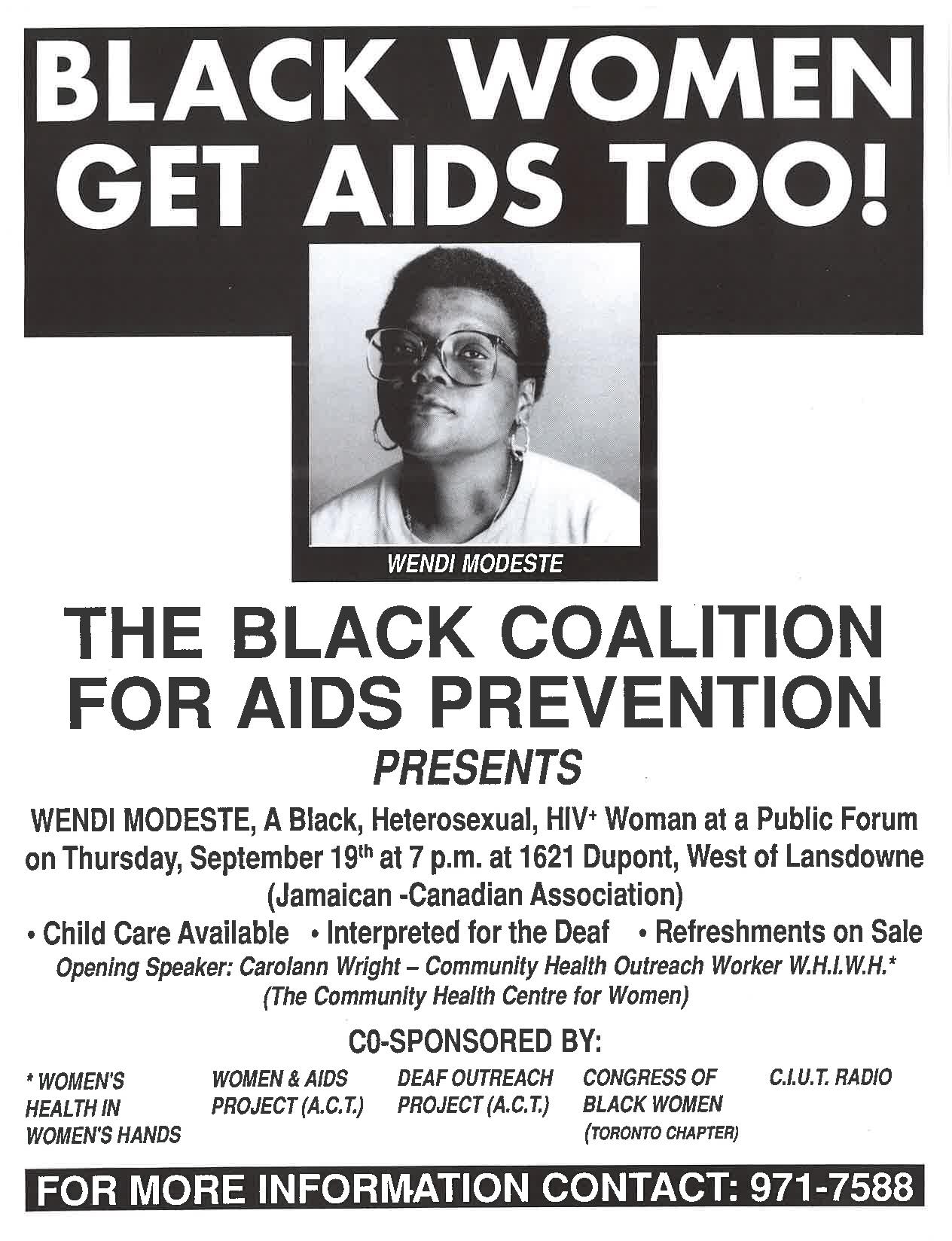
Jackie has also shown up in our interviews as raising key questions about Black community concerns at a pivotal retreat that AIDS ACTION NOW! held at the Hart House Farm in 1989, which sparked a series of conversations about interlocking oppressions as they manifest in people’s experience of HIV and AIDS. Gary Kinsman remembered Jackie’s intervention at the Hart House retreat in his interview for the project: “And Jackie was raising important questions about racism and racialization, but also about how to do AIDS work in communities of people that were not gay-identified at least—how to do that. It was also raising questions then not only about treatment access but about all of the sorts of issues related to AIDS and HIV… So, some sort of notion of broadening this out to include especially issues and areas of concern related to people of colour and to women. I mean that was raised, I think, in some important ways at this retreat and there was some major resistance to that.” At many points in our interviews we heard people reflect on how AIDS organizing pulled them to reflect on the complexity of people’s entangled political identities – that while many of them may have started from one subject position, much of the work really required having a complex, intersectional approach. Activist Renee du Plessis told us, speaking about her inspiration to take leadership from the people most affected by systemic oppression in responding to HIV and AIDS, “I think I would say the challenges were that the group that was the most affected was not exclusively well educated, with a multitude of resources. Gay men also included poor men and First Nations men and immigrant men, you know. And then it started also getting to be where I became more and more aware of criticism that lesbians were holding, and that women in general were holding, both to the organization and what they were doing and their presumptions on who was actually the most affected.”
As we move toward the end of funding for this oral history project, we are continuing to document and remember AIDS activism with a commitment to challenging anti-Black racism and to centering those most affected by the ongoing crisis. As Doug said towards the end of our conversation with him, “You know, as James Baldwin would say, you can’t change anything unless you face it.” On this World AIDS Day, we reflect on what it means to face the ways that racism has shaped and continues to shape people’s experience of HIV and AIDS.